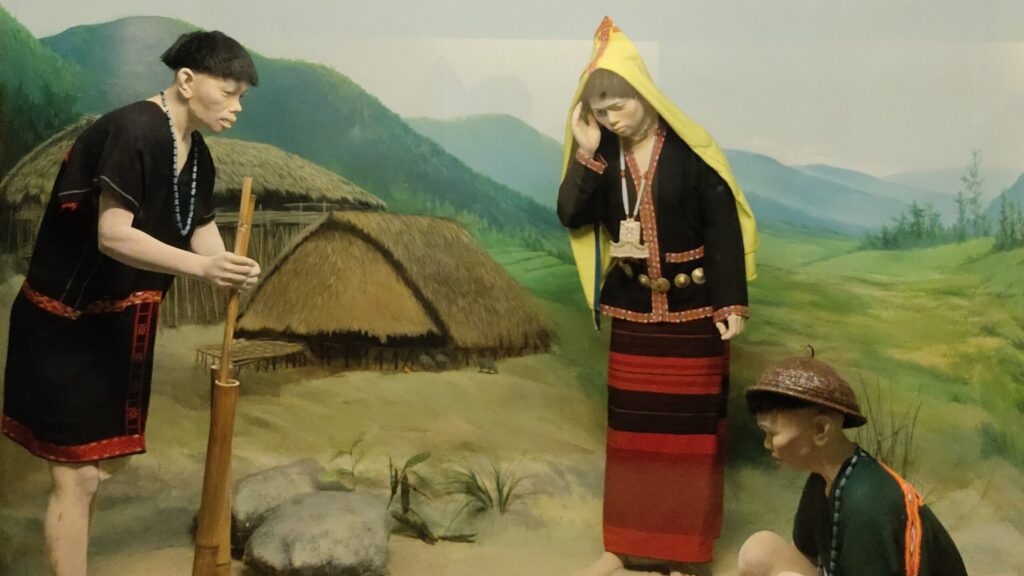The Adi people are one of the most populous groups of indigenous peoples in the Indian state of Arunachal Pradesh. A few thousand are also found in the Tibet Autonomous Region, where they are called the Lhoba together with some of the Nishi people, Na people, Mishmi people and Tagin people. (Source: Wikipedia)
There are three major Adi sub-tribe (source: State museum Itanagar) they are:
ADI BORI
Location :
West Siang District
General Information :
They come under one of the allied groups of the Adi community inhabiting
in the central region of the West Siang district. They prefer to settle
their villages at the higher elevation of high hills.
Agriculture is their mainstay of life and they mainly practice Jhum (shifting)
cultivation. They were keen traders and had a trade relation with Tibet.
They also practice inter- village trade. They had barter trade relation
with the neighboring tribes of Ashings, Shimongs and Minyongs. Rice is t
he staple food but as a substitute of rice they eat Tanget, an indigenous
cereal.
They follow Donyi-Polo religion and believe in the existence of a number
of deities and spirits. They believe Sisu (mother earth) gave birth to
Abo Tani (mythical forefather). Their main festival is Donggin associated
with supreme deity Donyi-Polo (Sun-Moon) and celebrated after harvesting
during the month of February
The men are expert in cane and bamboo crafts so are women in weaving.
ADI MINYONG
Location :
East Siang, Siang and Upper Siang Districts.
General Information :
The Minyong is one of the largest allied groups of the Adis. They have a
tradition of dormitory system locally called Dere in case of boy’s and
Raseng in case of girl’s which plays significance role as an institution
for imparting training of traditional wisdom of the society.
Agriculture is their mainstay of life and they practice both dry and wet
method of cultivation. Rice is their staple food. Black smithy is another
traditional craft practised by few people of their society. In past
pottery making was prevallent.
They follow Donyi-Polo (Sun-Moon) religion and believe in the existence
of a number of deities and spirits. One of their main festivals is Solung
(agricultural) celebrate in the month of September for bumper cropping and
prosperity of the people. Ponung (group) dance is very popular and performed
in all the festivals. They also observe other festivals such as Unying in the
month of April and Etor in the month of May.
They had trade relation with the Tibetans, Boris and other neighboring communities
of Assam. The women are expert in weaving as the men in cane and bamboo basketry.
The Minyongs are strong, brave and patriotic people, who had fought with the Britishers
for the sake of Mother India.
ADI PADAM
Location:
Upper Siang, East Siang and Lower Dibang Valley Districts.
General Information :
Padam is one of the largest allied groups of the Adis.
They have long houses used as community hall cum bachelor’s
dormitory for boys called Moshup and maid’s dormitory called Raseng.
These are the traditional institutions to learn the art of living and
to get liberty to choose their intending partners.
Agriculture is their basic means of livelihood and practice both dry
and wet method of cultivation. Hunting, Fishing and domestication of
animals are also part of their occupation. They also practice inter
village trade. Rice is their staple food.
They follow Donyi-Polo (Sun-Moon) religion and believe in the existence
of a number of deities and spirits. Solung is their main festival related
to Agriculture. They have rich tradition of folk songs and dances(Ponung).
The men are expert in cane and bamboo crafts. Some are expert in black smithy
also. The women are very good weavers and weave beautiful designs in their
textile through their indigenous loin loom. Male and female both wear beads
ornaments of different colours.

